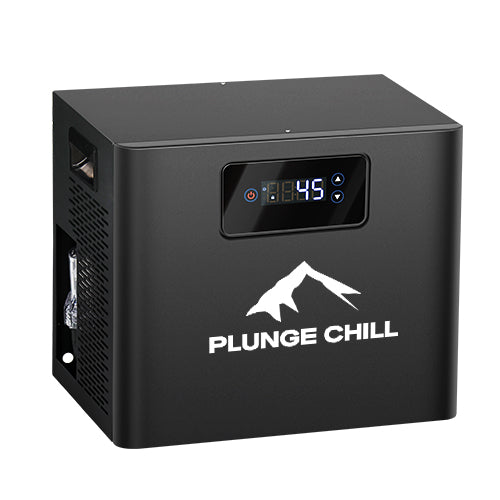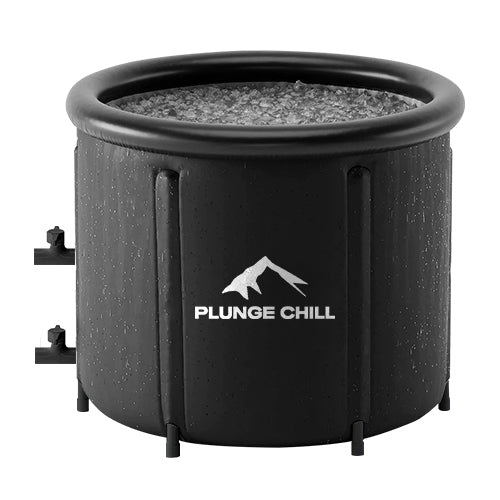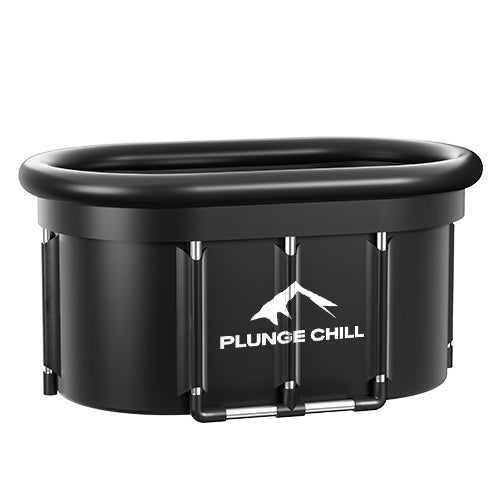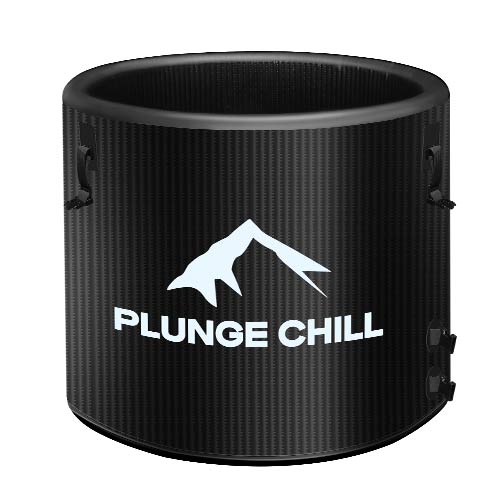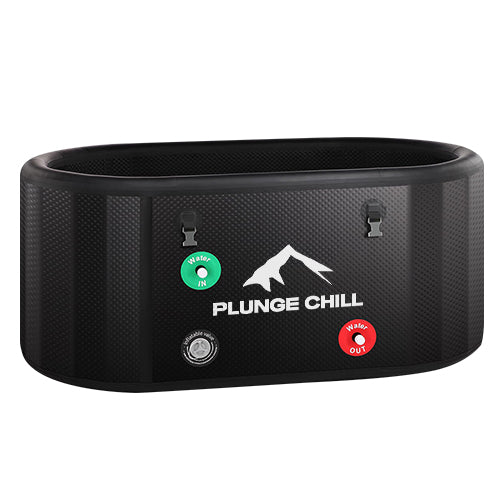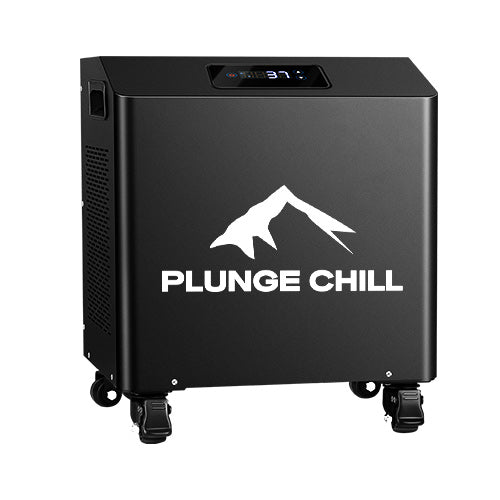Ready to try a cold plunge? You can start safely with the right steps. A cold plunge means sitting or standing in cold water for a short time, often using a cold plunge tub at home or a local gym. Many people use a cold plunge chiller to keep the water at the perfect temperature. Start slow, let your body adjust, and remember—gradual exposure makes the process much easier. You might feel nervous, but you can do this!
Key Takeaways
-
A cold plunge is when you sit in cold water for a short time. It helps your body and mind feel better. Start slow with water between 50°F and 60°F. Keep your sessions short so your body can get used to it. Cold plunges can help your muscles feel less sore. They can also make your mood better. You may focus more and feel less stressed. Always follow safety tips. Never do a cold plunge alone. Listen to your body. Warm up slowly after you finish. You do not need fancy gear to start. Simple tubs and a thermometer are enough to begin your cold plunge journey.
What is a Cold Plunge

Immersing your body in cold water (usually between 50 and 59°F) for two to fifteen minutes is known as a "cold plunge," and it can improve performance, speed up recovery, and lower inflammation. Both athletes and health enthusiasts can benefit from this type of cold-water treatment, which uses natural cold water or specialized cold plunge chillers to produce potent physiological reactions.
For maximum medicinal advantages, this age-old method—which was recorded by the Greeks and Egyptians thousands of years ago—combines traditional knowledge with contemporary precision temperature control.
How It Works
When you step into cold water, your body reacts right away. Your blood vessels tighten, and your heart starts to beat a little faster. This helps your body stay warm and can boost your energy. Cold plunges also trigger the release of norepinephrine, a chemical that can help you feel more alert and focused.
Let’s take a quick look at how cold plunges have been used through history:
-
Ancient Egypt: People used cold water for healing skin problems.
-
Ancient Greece: Doctors like Hippocrates used cold water to treat fevers and wounds.
-
Renaissance Era: Water baths became popular in spa towns.
-
18th-19th Centuries: Doctors used ice baths for pain and fever.
-
Modern Era: Athletes use cold plunges to recover from tough workouts.
-
Today: Cold plunge tubs and chillers make it easy for anyone to try this practice at home.
You can see that people have trusted cold water for health for thousands of years. Now, with modern equipment, you can enjoy the cold plunge benefits safely and comfortably.
Cold Plunge Benefits
Physical Effects
After a cold plunge, your body might feel different. Your blood vessels get smaller, which can help with swelling. This also helps sore muscles feel better. Many athletes use a cold plunge tub to recover after hard workouts. You might notice less pain in your joints and muscles. Some people say their skin feels tighter and looks brighter. Cold water makes your body work harder to stay warm, so you may burn more calories.
Tip: A cold plunge chiller keeps the water at the best temperature for recovery.
Mental Effects
A cold plunge helps your mind as well as your body. It can make you feel happier and less stressed. When you get in cold water, your brain makes endorphins. These are chemicals that help you feel good. Your body also makes more norepinephrine, which helps you focus. Studies show cold water can lower stress hormones like cortisol for hours.
Here’s a quick look at what research says about mental benefits:
|
Aspect |
Evidence & Findings |
|---|---|
|
Neurotransmitter Changes |
Cold water raises endorphins and norepinephrine, which helps mood and focus. |
|
Stress Hormone Reduction |
Studies show less cortisol after cold water immersion. |
|
Physiological Mechanisms |
Cold starts body changes that help you handle stress. |
|
Specific Study |
A 2021 study found people felt happier after 20 minutes in cold sea water. |
|
Long-term Effects |
Doing cold plunges often can keep norepinephrine high and stress low. |
|
Potential Applications |
Cold water may help with anxiety and depression. |
Beginner Expectations
You might feel shocked the first time you try a cold plunge. Your breathing could get fast, and your skin may tingle. This is normal. Most people get used to it after a few tries. Start slow and pay attention to your body. You will probably feel more energy and a better mood after each session. Over time, you may find it easier to handle stress and recover from exercise.
Cold Plunge Safety
Who Should Avoid
Not everyone should jump into a cold plunge right away. Some health conditions can make cold water risky. You need to know if you fall into one of these groups before you try it.
-
Heart problems: If you have heart disease or a history of heart attacks, cold water can put extra stress on your heart.
-
High blood pressure: Cold water can make your blood pressure go up quickly.
-
Raynaud's disease: This condition makes your fingers and toes very sensitive to cold.
-
Diabetes: Cold water can affect your blood sugar and how your body reacts to insulin.
-
Poor circulation: If your blood does not flow well, cold water can make it worse.
-
Arrhythmias: If your heartbeat is not regular, cold water can trigger more problems.
If you take medicine like beta-blockers, you should also be careful. These medicines can change how your body handles cold.
Note: If you have never tried a cold plunge before, talk to your doctor first. It is always better to be safe.
When to See a Doctor
You should check with your doctor before starting cold plunges if you have any health concerns. Medical groups say you need to get advice if you:
-
Have heart disease, high blood pressure, diabetes, or any problems with blood flow.
-
Take medicines that affect your heart or blood pressure, like beta-blockers.
-
Have never tried cold plunging before.
-
Feel unsure about how your body will react to cold water.
Doctors warn that cold water can cause cold shock, hypothermia, or put extra strain on your heart. These risks are higher if you have health problems. Always ask your doctor if you are not sure.
Safety Tips
You want your cold plunge to be safe and enjoyable. Here are some tips to help you stay safe:
-
Never plunge alone. Always have a buddy nearby, especially if you are new to cold plunging.
-
Start slow. Begin with short sessions and warmer water. Let your body get used to the cold.
-
Listen to your body. If you feel dizzy, numb, or have trouble breathing, get out right away.
-
Use a timer. Keep track of how long you stay in the water.
-
Warm up slowly after your plunge. Put on warm clothes and move around gently.
-
Keep your cold plunge tub clean and check the temperature before you get in.
-
If you use a cold plunge chiller, make sure it works well and keeps the water at a safe temperature.
Tip: Safety comes first. If you ever feel unsure, stop and ask for help.
Necessary equipment and expenses
Starting with cold plunging is not hard. You do not need expensive gear at first. The right equipment makes it safer and more fun. Here is what you need and what it might cost.
Basic Equipment
-
Cold Plunge Tub: This is where you sit in cold water. You can use a bathtub, stock tank, or a special cold plunge tub. Some people use big barrels or inflatable tubs.
-
Cold Plunge Chiller: This keeps the water cold all the time. It cools the water fast and holds the temperature you want.
-
Thermometer: You need this to check the water temperature. It helps you stay safe.
-
Timer: Use a timer to see how long you are in the water.
-
Insulated Spa Cover: This keeps the water cold and clean when you are not using it.
Tip: Begin with simple things. You can get better equipment later as you get used to cold plunging.
Cost Breakdown
|
Item |
Estimated Cost Range |
|---|---|
|
Basic Tub/Stock Tank |
$50 – $300 |
|
Dedicated Cold Plunge Tub |
$800 – $5,000+ |
|
Cold Plunge Chiller |
$1,000 – $4,000+ |
|
Thermometer |
$10 – $30 |
|
Timer |
$10 – $25 |
|
Insulated Cover |
Often included or $100+ |
Getting Started
Preparation
Before you jump into your first session, you need to get ready. Preparation helps you feel safe and confident. Start by picking a spot for your plunge. You can use a cold plunge tub, your bathtub, or even a clean outdoor barrel. Make sure the area is safe and easy to get in and out of. Place a towel and warm clothes nearby for after your session.
Check the water temperature with a thermometer. For beginners, aim for water between 50°F and 60°F (10°C to 15°C). This range feels cold but stays safe for most people. If you use a cold plunge chiller, set it to this range. Fill your tub with clean water and double-check the temperature before you get in.
You might want to try a cold shower or a quick dip in cool water first. This helps your body get used to the feeling. Even a 30-second cold shower can help you build confidence.
Tip: Always have someone nearby when you try a cold plunge for the first time. A buddy can help if you feel dizzy or need support.
Mindset
Your mindset matters as much as your body. Cold water can feel shocking at first. You might feel nervous or excited. That is normal. Remind yourself that you are in control. You can get out at any time.
Take a few deep breaths before you start. Focus on staying calm. Think of the cold as a challenge, not a threat. Many people find that a positive attitude helps them enjoy the experience more.
If you feel anxious, try this:
-
Close your eyes for a moment.
-
Picture yourself stepping into the water and feeling strong.
-
Tell yourself, “I can do this.”
Note: Your mind will want to jump out right away. Stay calm and breathe. The feeling gets easier with practice.
Water Temperature
The right water temperature makes a big difference. For beginners, 50°F to 60°F (10°C to 15°C) works best. This range gives you the cold plunge benefits without too much shock. If the water feels too cold, add a little warm water. If it feels too warm, add ice or use your cold plunge chiller to cool it down.
|
Experience Level |
Recommended Temperature |
|---|---|
|
Beginner |
50–60°F (10–15°C) |
|
Intermediate |
45–55°F (7–13°C) |
|
Advanced |
39–50°F (4–10°C) |
Always check the temperature before you get in. Your body needs time to adjust. Never start with ice-cold water if you are new.
Session Duration
Start with short sessions. For your first time, try 30 seconds to 2 minutes. This gives your body a chance to get used to the cold. Use a timer to keep track. If you feel okay, you can slowly add more time in future sessions.
Here’s a simple plan:
-
First week: 30 seconds to 1 minute per session.
-
Second week: 1 to 2 minutes per session.
-
Third week: 2 to 3 minutes per session.
-
Fourth week: Up to 3 minutes, if you feel comfortable.
Always listen to your body. If you feel numb, dizzy, or short of breath, get out right away. Take slow, deep breaths as you enter the water. Step in calmly, exhale, and focus on your breathing. This helps your body handle the cold better.
Tip: You do not need to stay in longer to get the benefits. Short, regular sessions work best.
You are now ready to start your cold plunge journey. With the right preparation, mindset, and safety steps, you can enjoy all the cold plunge benefits at your own pace.
4-week beginner plan
Ready to start your cold plunge journey? Here’s a simple 4-week plan that helps you build confidence and enjoy all the cold plunge benefits. You’ll use your cold plunge tub or even your regular bathtub. If you have a cold plunge chiller, you can keep the water at the perfect temperature every time.
Week 1: Getting Comfortable
-
Set your water temperature between 55–60°F (13–15°C).
-
Start with 30 seconds to 1 minute in the water.
-
Try 2–3 sessions this week.
-
Focus on slow, deep breathing.
Tip: Cold showers work too if you don’t have a tub yet.
Week 2: Building Tolerance
-
Lower the temperature to 50–55°F (10–13°C) if you feel ready.
-
Stay in for 1–2 minutes per session.
-
Aim for 3 sessions this week.
-
Notice how your body feels after each plunge.
Week 3: Gaining Confidence
-
Keep the water at 50–55°F (10–13°C).
-
Try to stay in for 2–3 minutes.
-
Do 3–4 sessions this week.
-
Practice entering the water calmly and using steady breathing.
Week 4: Finding Your Routine
-
Adjust the temperature to 45–55°F (7–13°C) if you want more challenge.
-
Stay in for up to 3 minutes, but always listen to your body.
-
Try 4 sessions this week.
-
Track your progress in a journal or app.
|
Week |
Temp (°F) |
Time (min) |
Sessions |
|---|---|---|---|
|
1 |
55–60 |
0.5–1 |
2–3 |
|
2 |
50–55 |
1–2 |
3 |
|
3 |
50–55 |
2–3 |
3–4 |
|
4 |
45–55 |
up to 3 |
4 |
Studies show gradual exposure helps your body adapt safely. You’ll notice better mood, less muscle soreness, and more energy as you go.
Stay patient and celebrate your progress. You’re building a healthy habit that supports your mind and body!
During the Plunge

Breathing
When you step into a cold plunge tub, your body reacts fast. You might gasp or breathe quickly. This is normal, but you can control it. Take a deep breath in through your nose. Let it out slowly through your mouth. Try to make your exhale longer than your inhale. This helps your body stay calm and makes the cold feel less shocking.
Scientists from the Huberman Lab found that deep, controlled breathing with long exhales helps your nervous system handle cold better. Avoid fast or heavy breathing before you get in. That can make you feel dizzy or unsafe. Focus on slow, steady breaths while you are in the water. This keeps you safe and helps you enjoy the cold plunge benefits.
Tip: Count to four as you breathe in, then count to six as you breathe out. This simple trick can help you relax.
Who is not suitable for a cold water bath?
Some people should not try a cold plunge. If you have heart problems, high blood pressure, Raynaud’s disease, diabetes, or poor circulation, cold water can be risky. People with irregular heartbeats or who take certain medicines should also avoid it. Always talk to your doctor if you are unsure.
What to Expect
You will feel a strong chill at first. Your skin may tingle. Your breathing might speed up. After a few seconds, your body starts to adjust. You may feel more awake and alert. Many people notice a boost in mood and energy. If you use a cold plunge chiller, the water stays at the right temperature, making the experience safer and more comfortable.
Staying Safe
Safety comes first in every cold plunge. Always have someone nearby, especially if you are new. Use a timer to track your session. Listen to your body. If you feel dizzy, numb, or very cold, get out right away. Dry off and put on warm clothes after your plunge. These steps help you enjoy all the cold plunge benefits while staying safe.
After the Plunge
Warming Up
You just finished your cold plunge. Now, it’s time to warm up the right way. Don’t rush to a hot shower or bath. Let your body adjust slowly. This helps you get the most cold plunge benefits. Step out of your cold plunge tub calmly. Move steadily to avoid feeling dizzy. Dry off right away to stop losing heat. Put on loose, warm layers. A cozy hoodie, sweatpants, and thick socks work great. Gentle movement helps your body warm up faster. Try marching in place, swinging your arms, or doing a few bodyweight squats. These simple moves boost your blood flow and raise your core temperature.
Tip: Avoid jumping into a hot shower right after your plunge. Let your body reheat naturally for the best results.
Recovery Tips
Your body needs a little care after a cold plunge. Drink water or an electrolyte drink to help your muscles recover. Light stretching feels good, but wait until you feel warm. Start with dynamic stretches, like arm circles or torso twists. Save longer, static stretches for later. If you want to relax, try deep breathing or a short meditation. This calms your mind and helps your heart rate return to normal. Many people find that these habits make each cold plunge session easier and more enjoyable.
Here’s a quick checklist for recovery:
-
Dry off and dress in warm layers
-
Move gently to boost circulation
-
Hydrate with water or electrolytes
-
Stretch after warming up
-
Practice deep breathing or meditation
Monitoring Your Body
Always listen to your body after a cold plunge. If you feel dizzy, shiver a lot, or feel unwell, stop and rest. Your body tells you when something isn’t right. Most people feel energized and refreshed, but everyone reacts differently. If you ever feel too cold or uncomfortable, wrap up in a blanket and sip a warm drink. Keep track of how you feel after each session. This helps you notice patterns and enjoy the cold plunge benefits safely. If you have any health concerns, talk to your doctor before your next plunge.
Remember: Your safety comes first. Enjoy your cold plunge journey and celebrate your progress!
Common Mistakes
Trying a cold plunge for the first time feels exciting, but you might make some common mistakes. Knowing what to avoid helps you get the most cold plunge benefits and keeps you safe.
Too Cold, Too Fast
You might think colder is better, but that’s not true. If you jump into icy water right away, your body can go into shock. Your heart races, and you might feel dizzy or short of breath. Scientists say your body needs time to adjust to cold. Start with water between 50–60°F (10–15°C). Use your cold plunge chiller or add ice slowly. Give your body a chance to build tolerance.
Tip: Always check the water temperature before you get in your cold plunge tub.
Ignoring Signals
Your body talks to you during a cold plunge. If you feel numb, shiver a lot, or get lightheaded, those are warning signs. Don’t ignore them. Staying in too long or pushing through pain can be dangerous. The cold plunge benefits come from safe, short sessions—not from suffering.
-
Listen for these signals:
-
Numb fingers or toes
-
Shaking or shivering
-
Dizziness or confusion
-
Skipping Recovery
After your cold plunge, you need to warm up slowly. Some people skip this step and feel cold for hours. Gentle movement, warm clothes, and a cozy drink help your body recover. Skipping recovery can make you feel tired or even sick. Recovery is part of the process.
Note: Let your body reheat naturally for the best results.
No Safety Plan
Never plunge alone, especially if you’re new. Always have a buddy nearby. Keep a phone close in case you need help. Set a timer before you get in your cold plunge tub. A safety plan keeps you protected and lets you enjoy all the cold plunge benefits.
|
Mistake |
What to Do Instead |
|---|---|
|
Too cold, too fast |
Start with mild cold |
|
Ignoring signals |
Listen to your body |
|
Skipping recovery |
Warm up slowly |
|
No safety plan |
Always have a buddy |
Stay smart, stay safe, and enjoy your cold plunge journey!
Routine Tips
Progression
You want to get better at cold plunging, right? Start slow and build up over time. Your body needs time to adjust to the cold. Begin with short dips in your cold plunge tub. Try 30 seconds to 2 minutes at first. As you get used to the cold, you can stay in longer. You might even lower the water temperature a little each week. Using a cold plunge chiller helps you keep the water at the right level for your progress.
Tip: If you feel too cold, take a break. You can do more than one short dip instead of one long session.
Frequency
How often should you use your cold plunge tub? Most experts suggest 2 to 4 sessions each week. Aim for about 11 minutes of total cold exposure every week. You can split this time into several short sessions. For example, you might do three 4-minute plunges or four 3-minute plunges. This routine gives you the best cold plunge benefits without overdoing it.
Tracking Progress
Tracking your cold plunge journey helps you see your growth. Write down the water temperature, how long you stayed in, and how you felt after each session. You can use a notebook or a phone app. This record helps you notice patterns and celebrate your wins.
-
Record your session date
-
Note the water temperature (use your cold plunge chiller for accuracy)
-
Write how long you stayed in
-
Describe how you felt after
Keeping track makes it easier to spot the cold plunge benefits over time. You will see your confidence and comfort grow with each session!
You now know how to start your cold plunge journey. Begin with short sessions in your cold plunge tub, use a cold plunge chiller for the right temperature, and always listen to your body. Take it slow and enjoy the cold plunge benefits as you build confidence. Consistent practice brings real results. Have questions or want to share your story? Drop a comment below—your experience can inspire others!
